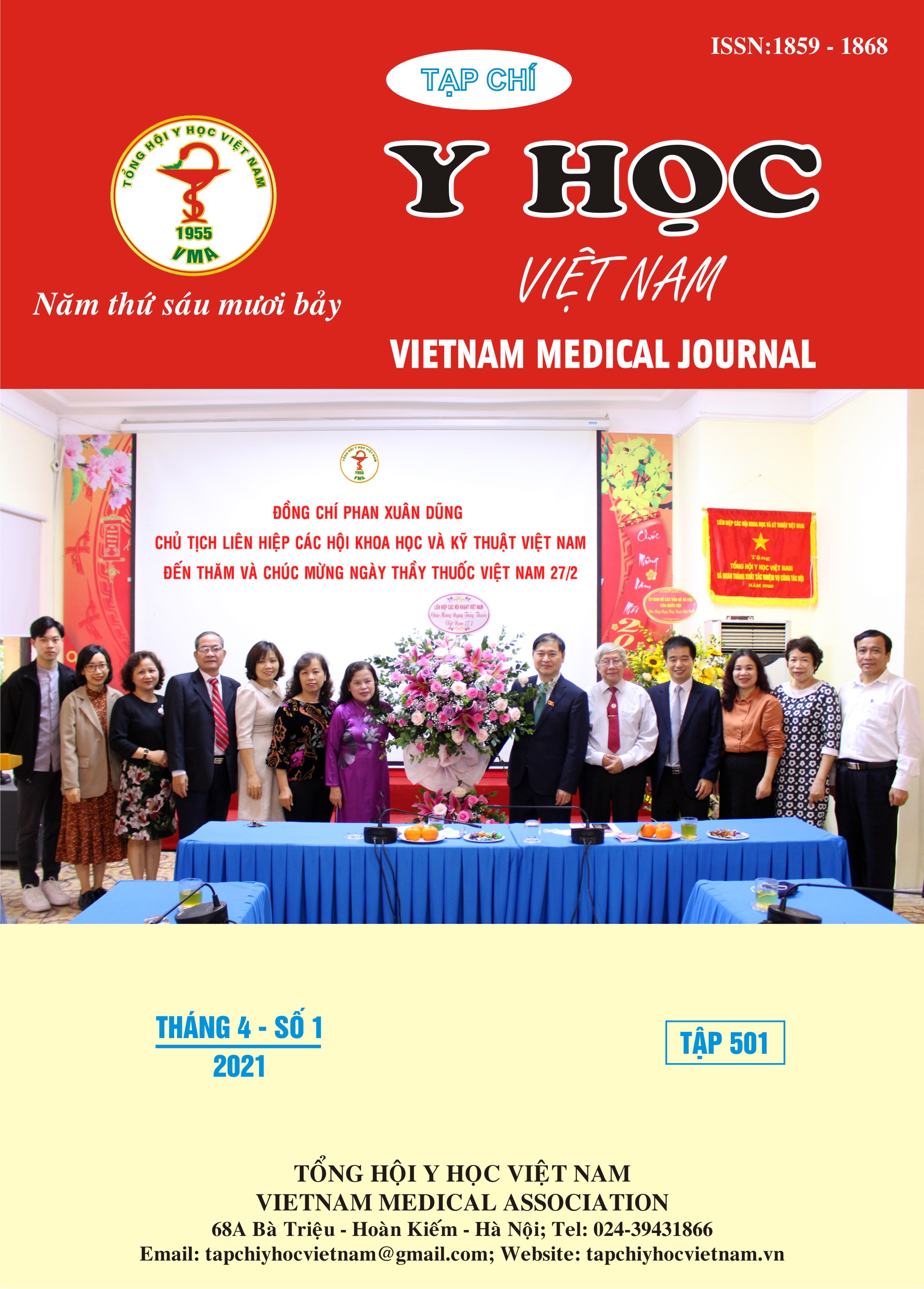CORRELATION BETWEEN THE CARABELLI TRAIT AND THE CROWN PERIMETER OF THE FIRST AND SECOND UPPER MOLARS IN DENTALTREATMENT
Main Article Content
Abstract
Objectives: The aim of this study was to determine the correlation between the Carabelli trait and the crown perimeter of the first and second upper molars. Methods: With the cross - sectional and analytic study design, the sample consisted 45 upper molars (no Carabelli (16 teeth); pit, groove form (16 teeth); tubercular form (13 teeth)). Crown perimeter were determined by drawing a curve following the crown contour based on the digital image. The drawn contour is measured by Autocad software 2007. Results: The crown perimeter of the first and second upper molars were significant different (p<0.05) between three Carabelli forms, respectively: no Carabelli (38.5mm and 38.4mm); pit, groove form (39.6mm and 39.7mm); tubercular form (40.7mm and 40.8mm). There were correlation between the crown perimeter of the first and second upper molars and Carabelli trait (r=0.655 and r=0.783), p<0.01. Conclusion: There were positivecorrelation between three Carabelli forms and the crown perimeter of the first and second upper molars.
Article Details
Keywords
The crown perimeter, the upper molars
References
2. Harris E. F. (2007), “Carabelli’ Trait and Tooth Size of Human Maxillary First Molars”, American Journal of Physical Anthropology, 132, pp. 238-246.
3. Hoàng Tử Hùng (1993), “Đặc điểm hình thái nhân học bộ răng người Việt’’, Luận án phó tiến sĩ khoa học Y dược, Trường Đại học Y Dược TP.Hồ Chí Minh, tr.1-63.
4. Huỳnh Kim Khang (2011), “ Nghiên cứu dọc mối liên hệ một số đặc điểm hình thái giữa răng sữa và răng vĩnh viễn trẻ em người Việt”, Luận án tiến sĩ khoa học Y dược, tr.53-67.
5. Keene H. J. (1968), “The Relationship Between Carabelli’ Trait and the Size, Number and Morphology of the Maxillary Molars”, Archs Oral Biol, 13, pp. 1023-1025.
6. Levitan M.E, Himel V.T (2006), “Dens Evaginatus: LiteratureReview, Pathophysiology, and Comprehensive Treatment Regimen’’, Journal of Edondotics, 32, pp.1-9.
7. Reid C., Van Reeman J. F., and Groeneveld H. T. (1991), “ Tooth Size and the Carabelli’ Trait”, American Journal of Physical Anthropology, 84, pp. 427-432.
8. Sadatullah S., et al, (2012), “The Prevalence of Fifth Cusp (Cusp of Carabelli) in the Upper Molars in Saudi Arabian School Student”, Int. J. Morphol, 30 (2), pp. 757-760.


